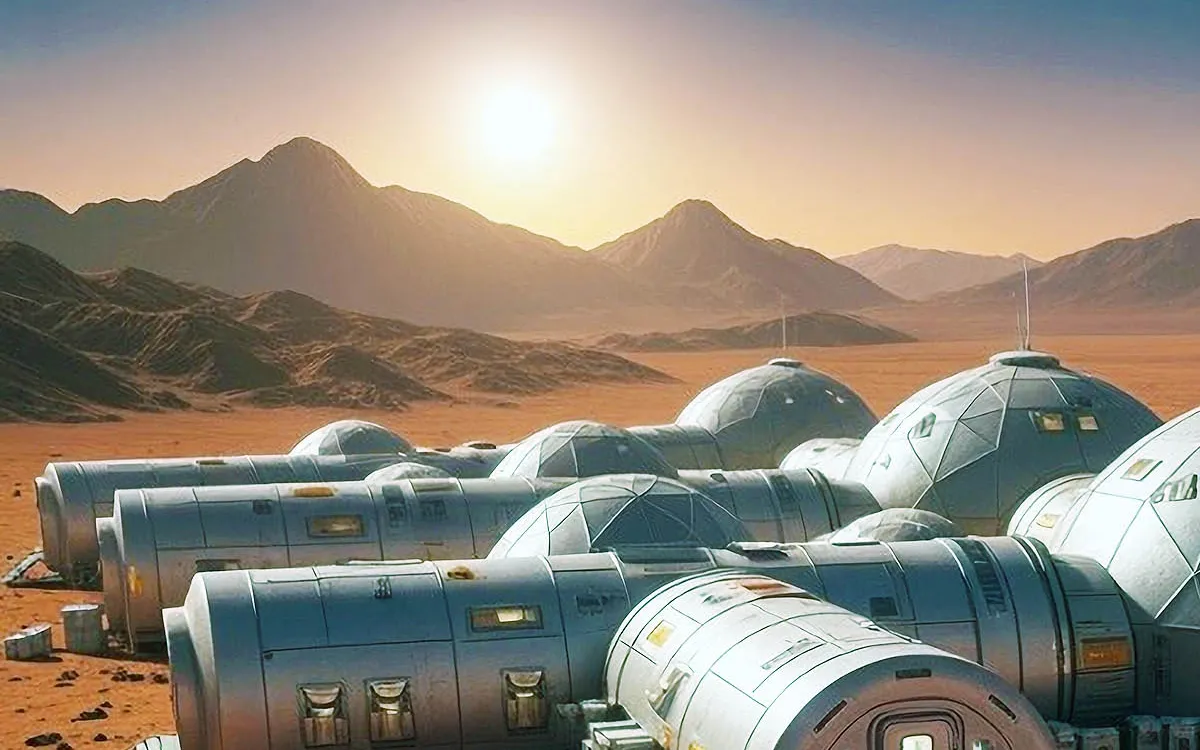
As humanity prepares for the momentous occasion when the first astronauts step onto the surface of Mars, water will be a critical resource. Beyond the bravery and curiosity required for such a mission, astronauts will need substantial amounts of water for essential activities like drinking, breathing, growing food, and even producing rocket fuel for their return journey. A groundbreaking study led by University of Mississippi planetary geologist Erica Luzzi reveals a promising source of water ice located in the mid-latitudes of Mars, potentially just beneath the dusty soil.
Utilizing ultra-high-resolution images from the HiRISE camera aboard NASA’s Mars Reconnaissance Orbiter, Luzzi and her team meticulously examined the Amazonis Planitia, a vast volcanic plain that straddles the equator and poles of the planet. The analysis uncovered distinctive geological features, including bright-rimmed craters, polygonal fracture patterns, and gentle undulations that resemble formations on Earth typically shaped by ground ice.
The evidence strongly suggests that pockets of water ice may lie less than a meter beneath the surface, making it accessible for robotic drills or future astronauts without the need for cumbersome equipment.
This discovery is significant for two interrelated reasons: survival and self-sufficiency. Luzzi emphasizes the necessity of H₂O for human missions to Mars, stating, “If we’re going to send humans to Mars, you need water – not just for drinking, but for propellant and a variety of applications.” Transporting large quantities of water from Earth would be prohibitively expensive, making it crucial for mission planners to explore in situ resource utilization (ISRU). This strategy aims to utilize local resources to reduce launch mass and costs.
While Mars is known to contain extensive ice deposits at high latitudes, these areas are typically frigid and receive minimal sunlight, making them unsuitable for solar-powered bases. In contrast, the mid-latitudes, including Amazonis Planitia, provide a favorable environment with sufficient sunlight and cooler temperatures, allowing ice to remain near the surface.
The HiRISE (High-Resolution Imaging Science Experiment) camera is capable of identifying objects on Mars as small as 30 centimeters. Luzzi’s team identified sharp impact craters that had excavated bright material, which previous landers have confirmed to be ice. The researchers also observed patterned ground similar to permafrost regions on Earth, suggesting the presence of buried ice that expands and contracts with seasonal temperature changes.
To bolster their findings, the team mapped the distribution of these features on gentle slopes and shaded areas, indicating that ice could persist in these locations for millions of years, despite Mars’s thin atmosphere. The evidence points to Amazonis Planitia as a likely candidate for accessible ice, enhancing its status as a prime landing site for future missions.
For engineers planning crewed missions, the logistical challenges are daunting. A small crew of four astronauts could require over 20 tons of water for a 500-day stay on Mars. Transporting this water from Earth would necessitate additional launch vehicles and astronomical budgets. Although polar ice is abundant, it is often too cold and dark; equatorial ice is either deep or scarce. However, mid-latitude ice, located just below the surface, could provide a viable solution for sustainable operations.
Giacomo Nodjoumi from the Italian Space Agency highlights the differences in logistics between lunar and Martian missions: “For the moon, it would take us one week to go back and forth to Earth for resupply. But for Mars, it would take months. Therefore, we must be prepared for extended periods without resupply from Earth.” He concludes, “The most important resources are oxygen to breathe and water to drink. That’s what makes our candidate landing site really promising.”
The significance of water ice extends beyond the survival needs of astronauts; it may also preserve evidence of ancient or even current microbial life. Luzzi notes, “On Earth, ice can preserve biomarkers of past life and can also host microbial populations. It could tell us if Mars was ever habitable.” Accessing relatively pristine ice would enable scientists to analyze trapped gases or organic molecules shielded from harmful surface radiation.
Before astronauts can explore Amazonis Planitia, robotic scouts must validate the findings. Luzzi proposes using orbital radar sounders, such as SHARAD on the Mars Reconnaissance Orbiter or the future ESA-NASA Mars Ice Mapper, to investigate the thickness and continuity of the buried ice. “The next step would be radar analyses to better understand the depth and patchiness of the ice,” she explains.
Investigating variations in the “lag deposit,” a protective layer of soil and rock atop the ice, could determine the ice's stability. “Understanding that will help us decide where a robotic precursor should land,” Luzzi adds. Ultimately, a rover or lander equipped with a drill and spectrometers will need to directly sample the material to confirm these findings. Nodjoumi asserts, “We will never be sure of something if we don’t have a rover, a lander, or a human to take real measurements.”
While humans may be a decade or more away from traversing the Red Planet, each new dataset helps refine the potential locations for future habitats. By illuminating a region where life-sustaining water lies just below the surface, Luzzi and her colleagues have provided mission planners with an enticing target while reminding us that Mars is far from a desolate wasteland. Beneath its dusty exterior, vital resources and possible clues to past or present life await the daring explorers willing to dig. This pivotal study is published in the Journal of Geophysical Research Planets.
—– Like what you read? Subscribe to our newsletter for engaging articles, exclusive content, and the latest updates. Check us out on EarthSnap, a free app brought to you by Eric Ralls and Earth.com. —–